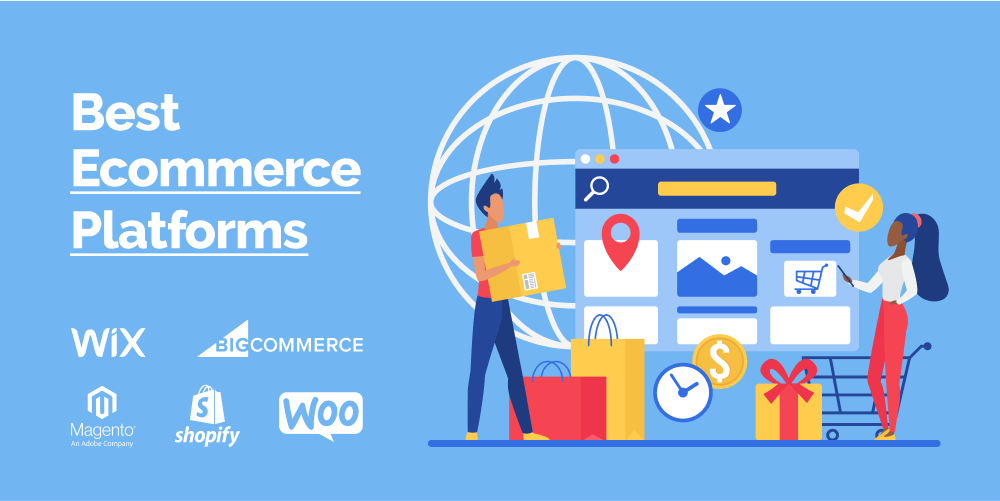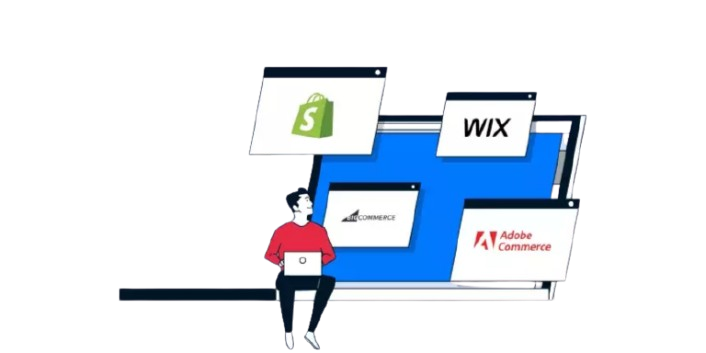Best Ecommerce Platforms in 2025: Shopify vs WooCommerce vs Magento
Choosing the right ecommerce platform in 2025 still depends on your business size, technical chops, budget, and growth plans. Shopify, WooCommerce, and Magento (now Adobe Commerce for the enterprise offering) remain market leaders — but they’re evolving in different directions. This post compares them across cost, hosting & maintenance, scalability, customization, performance, extensions, and recommended use-cases so you can pick the platform that fits your store.
Shopify: Best for merchants who want a fast, low-effort launch with built-in payments, hosting, and growing AI-assisted tools. Great for SMBs and brands that prefer a managed solution.
WooCommerce: Best for businesses that want full control, deep WordPress integration, and lower entry cost if you can manage hosting and maintenance. Ideal for content-driven stores and those who need flexible customization.
Magento / Adobe Commerce: Best for large merchants and B2B operations that need enterprise features, multi-store and complex product/catalog needs — but expect higher total cost and developer dependency.

Cost & total cost of ownership (TCO)
Shopify uses subscription pricing (monthly plans) plus payment processing fees and app costs. Typical merchant costs commonly start at a low plan but many end up paying for apps and transaction fees as they scale. Recent Shopify plan structures and add-ons remain the core cost driver.
WooCommerce itself is free as a plugin, but you must pay for hosting, domain, security, premium themes, extensions, and developer time for complex setups. This can be very low-cost for simple stores but rise with scale. Official WooCommerce guidance highlights ongoing hosting and extension costs.
Magento / Adobe Commerce — Magento Open Source is free, but Adobe Commerce (the enterprise product) has high licensing and cloud costs (reports indicate enterprise-priced tiers that may start in the tens of thousands annually), plus hosting, development, and maintenance. For enterprise-scale stores, TCO is significantly higher.
Takeaway: WooCommerce can be cheapest at small scale; Shopify is predictable and often cost-effective for growing SMBs; Magento is the most expensive overall but can justify costs at enterprise scale.
Ease of use & time-to-market
Shopify is built for speed: hosted, managed, drag-and-drop themes, integrated checkout — you can launch a basic store within hours. Shopify’s managed services and admin UX keep non-technical owners productive.
WooCommerce requires WordPress familiarity (or hiring someone who knows WP). Setup takes longer because you choose hosting, security, and plugins. But if you already run a WordPress site, adding WooCommerce feels natural.
Magento has a steep learning curve and requires developers and DevOps. Time-to-market is much longer than Shopify or WooCommerce unless you have a dedicated team.
Takeaway: For speed and simplicity choose Shopify; for WordPress-centric teams choose WooCommerce; for complex, custom enterprise builds choose Magento.
Customization & extensibility
Shopify: Extensive app marketplace and APIs. Customization is fast via themes and apps, but there are limitations compared with open-source platforms in deep backend changes. Shopify’s Liquid templating and new developer tools still enable advanced custom storefronts, and Shopify’s ecosystem increasingly adds AI automations.
WooCommerce: Highly flexible — you control everything from PHP code to extensions. If you need custom integrations or a content-first approach, WooCommerce is ideal. Its plugin ecosystem is large because it inherits the WordPress ecosystem.
Magento / Adobe Commerce: Built for extensibility and complex workflows (multi-warehouse, multi-currency, B2B pricing). The platform supports heavy customization but requires experienced Magento developers.
Takeaway: Magento and WooCommerce offer the deepest customization. Shopify offers faster customizations through apps and headless options but is more opinionated.
Performance & scale
Shopify: Because it’s a hosted SaaS, Shopify handles scaling, CDNs, and security for you. This reduces operational headaches as traffic grows. It also invests in AI/automation to speed merchant workflows.
WooCommerce: Performance depends on your hosting, setup, and optimizations. The WooCommerce project has been investing in performance improvements (HPOS and other initiatives aimed at faster order processing and better scalability in 2025). If tuned well on good hosting, it can handle sizeable stores.
Magento: Designed for high-volume stores when architected correctly — but performance requires proper hosting (often cloud or dedicated), caching, and expert ops. When done right, Magento scales extremely well.
Takeaway: Hosted Shopify gives consistent scaling easily; WooCommerce can scale but requires planning; Magento scales for enterprise but with higher ops cost.
SEO, marketing & ecosystem
WooCommerce (WordPress) leads for content-driven SEO because WordPress remains the most SEO-friendly CMS for blogs, landing pages, and content marketing. Plugins like Yoast or Rank Math are popular for optimization.
Shopify provides solid SEO basics, app integrations for marketing automation, email, and increasingly AI tools for product descriptions and promotions. For stores focused purely on commerce (vs content), Shopify’s ecosystem is extremely strong.
Magento includes advanced marketing and segmentation features for enterprise users; many third-party tools integrate for advanced personalization and B2B features.
Takeaway: If content marketing/SEO is your strategy, WooCommerce + WordPress is powerful. For commerce-first growth with built-in marketing tools choose Shopify. For enterprise personalization choose Magento.
Security & compliance
Shopify handles PCI compliance, security patches, and platform-level protections for you as part of its SaaS model. That makes compliance simpler for merchants.
WooCommerce requires you (or your host) to manage SSL, PCI compliance, and security updates. Good managed WordPress hosts can reduce this burden.
Magento needs strong ops and security expertise for proper hardening, though Adobe Commerce on Cloud comes with enterprise-grade security features and support.
Takeaway: SaaS reduces security overhead — Shopify wins for simplicity; WooCommerce and Magento require more proactive ops.
When to choose which (decision guide)
Choose Shopify if:
You want to launch quickly with minimal ops.
You want a predictable subscription model and built-in payments.
You prefer a hosted solution with support and scaling handled for you.
Choose WooCommerce if:
You already use WordPress and prioritize content + ecommerce.
You want full control over code, hosting, and SEO.
You’re price-sensitive at small scale and have technical resources or managed hosting.
Choose Magento / Adobe Commerce if:
You run large or complex catalogs, B2B features, or multiple storefronts.
You need enterprise-level customizations and can afford developer and hosting investment.
Final recommendation & next steps
There’s no single “best” platform in 2025 — only the best for your goals. If you’re a bootstrapping brand that needs speed and simplicity, start with Shopify. If your competitive advantage is content and you want low-cost entry with deep customization, pick WooCommerce. If you’re an enterprise with complex catalog, fulfillment, and B2B needs, Adobe Commerce (Magento) is a serious contender.
Next steps:
List your must-haves (payment methods, marketplaces, multi-currency, B2B pricing).
Estimate a 12–24 month budget for hosting, apps/extensions, and developer time.
Trial the platform: Shopify free trial or a local WordPress/WooCommerce sandbox; evaluate the admin UX and plugin ecosystem.
If enterprise-grade, get a Magento/Adobe Commerce consultation and request total cost estimates.
About the data & sources
This guide uses current platform documentation and recent vendor/industry reports to compare pricing, performance initiatives, and enterprise costs in 2025 (Shopify plans and help docs; WooCommerce developer notes on HPOS and performance; Adobe Commerce product pages and enterprise pricing analyses). Key references: Shopify pricing & help, WooCommerce developer updates, Adobe Commerce official pages, and industry pricing analyses. ShopifyThe WooCommerce Developer BlogAdobe for Businessmagefan.comReuters



